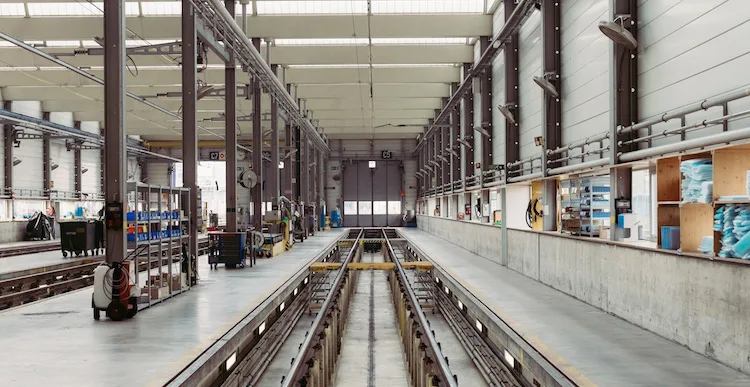7 Tips to Find the Perfect 3PL for Your Fulfillment Network

Outsourcing ecommerce warehousing to a third party logistics provider (3PL) has many benefits for a scaling business. Not only are these providers experts on all of the necessary operational tasks –– hiring warehouse workers, maintaining equipment, paying rent, keeping track of pallets, etc. –– but in many cases, these 3PLs can complete those tasks quicker, cheaper and more efficiently than you could in your own warehouse.
On average, using a 3PL can reduce fixed and variable logistics costs as well as inventory costs.
Third party providers address storage, transport and handling needs on behalf of client companies. They then use sophisticated software to develop a warehousing management and distribution plan that will best suit the needs of each company whose products they store.
All ready to sign up? Think carefully –– committing to a 3PL relationship is not a decision to take lightly. A 3PL has to fit well with your business operations, growth plans and customer service culture, because the services stipulated in a third party warehousing contract are generally performed on a long term basis. Once you are on board with one, it’s tough to disengage. A 3PL should be both a solutions provider and an adviser that you can trust. They should be thinking of creative ways to make sure that your products are brought to market faster and cheaper. To do so, they will need a complete understanding of all your present and future fulfillment needs.
We’ve developed our own short list of important considerations.
1. What is the 3PL’s level of technological sophistication?
Why can it take a 3PL so long to make a process change or enable a new process in response to a customer request? The answer is simply that they have many clients in a complex business. To the greatest extent possible, a 3PL wants to share processes across their customer base. That is much easier than trying to adapt to 30 different unique customer logistics scenarios. One of your challenges will be to make sure that your 3PL is keeping pace with the rapid and ongoing changes occurring in technology, and that its IT strategy and roadmap align with yours.
How much of a 3PL’s annual IT budget goes toward innovation-related projects?
How? Look at how much the company invests in technology annually as a percent of net revenues. Then, dig deeper. What you really want to know is how much of a 3PL’s annual IT budget goes toward innovation-related projects — i.e. toward developing or implementing new applications or functionality, especially customer-facing solutions, not just maintaining legacy systems.
Confirm that the capabilities of the 3PL’s systems are able to integrate with your own automation requirements such as your order routing and storefront inventory management tools, plus any accounting or CRM requirements.
2. Can the 3PL keep pace with your growth?
Chances are the answer is “yes.” Flexibility and scalability are key. Your 3PL needs to be able to handle your current requirements, as well as the requirements your business will have as it continues to grow. Ideally, you want to have a 3PL that can immediately take on that extra inventory. If your business plans to reach new markets, it is also necessary for the 3PL to be able to expand along with you. To meet these flexibility needs, a 3PL should work very closely with clients to understand their planning and forecasting, and in reponse, deliver in terms of labor and support services.
A 3PL must be able to help companies manage peak seasons.
Short term, a 3PL must be able to help companies manage peak seasons, such as the holiday rush for the retail sector. Clients need to be able to surge their supply chains so that they can get to market with precision and timing. Then, when the peak season is over, scale back down and not have those carrying costs in their supply chain.
3. How strong is the 3PL financially?
This is a question you should ask of any potential partner, but this is especially the case since 3PLs are capital-intensive businesses. Historically, they have funded operating costs, lease commitments and capital investments. A 3PL that is not financially stable may be focused on its own economic situation rather than helping you improve your business. Financially healthy partners should have the resources to invest in you as a client, and in their own operational capabilities, to provide the customer service you require.
Do your 3PL partners have the financial stability to weather significant disruptions, especially when access to capital is more restricted? And, are they in a good position to take advantage of innovations that will both protect and advance your business? Strong cash flow is the most important indicator of financial health.
Financially healthy partners should have the resources to invest in you.
Ask the 3PL for their profit and loss data covering the past few years so you can look for any trends that will help you to make your decision. Along with being financially healthy, check to see that the 3PL has solid relationships with banks and stable leadership.
4. Is the 3PL prepared for disasters?
Supply chain disruptions significantly affect your bottom line, so you should know how your 3PL partner is positioned to deal with them on the logistics side. Despite the increased risk of supply chain disruption, many companies are currently underfunding disruption-mitigation planning. Ask about internal planning for disaster preparedness, labor shortages/stoppages, technology outages, weather-related transportation disruptions and other risks particular to your product line.
5. How deep is the 3PL’s talent?
There is currently a shortage of supply chain and logistics talent in the industry, and it’s arguably the biggest issue facing both 3PLs and their clients. When choosing a supply chain partner for third party logistics, factor in the overall breadth and depth of experience within its staff. The amount of knowledge and expertise in warehousing and transportation among this potential partner’s management team and staff as a whole can have a significant impact (positive or negative) on business.
How deep is the 3PL’s talent pool? Will the replacement be as competent and have the same communication and relationship management skills as the previous person? Does the 3PL have a defined succession planning process that involves the client to ensure a smooth transition? Also, ask what kind of investments the 3PL has been making — and plans to make — in employee training.
6. Do they offer business intelligence and solutions beyond the basics?
This point goes beyond IT. Savvy 3PLs are introducing their ecommerce clients to related technology providers, providing insights about industry-leading practices and trends, and facilitating networking and knowledge-exchange opportunities with other shippers in the 3PL’s community.
Savvy 3PLs are introducing their ecommerce clients to related technology providers.
Does your 3PL conduct market research and share its findings with you? Do they organize peer-to-peer learning and networking events for clients and industry experts to attend? Do they make it easy for you to contact and collaborate with their extended team of experts and partners?
7. How do they stand on your needs and metrics that matter most?
Be sure to research and compare your potential 3PLs objectively against the metrics that matter most to your business. Objectively document your findings (here’s an Excel-based 3PL evaluation scorecard that is popular with our clients). Ask evaluation questions such as:
How do they manage stock rotation parameters?
How will they handle identification of a product’s location in the event of a recall?
Are they able to show ongoing cost and process improvements?
What is their lead time to respond to changes in order volume or origin/destination and stocking levels?
You also need to confirm that they have the necessary experience and flexibility to accommodate, or at least not interrupt, your business requirements outside of your direct relationship. For example, if you anticipate fulfilling future orders through both this new 3PL and your current network of dropshippers, make sure that your new 3PL’s processes (data requirements, etc.) don’t prohibit you from doing so. It can be incredibly frustrating to find out after the fact that all of your business’ integrated and automated processes need to be completely redesigned due to the unanticipated requirements of a newly contracted 3PL.
In all, a 3PL can be a huge time and budget saver for scaling businesses, just be sure not to commit to anything you haven’t fully researched.

Nate Kristy leads marketing for HubLogix, the Atlanta, Georgia-based ecommerce automation company that drives profits through efficiency in the worldwide supply chain. Through their technology – including the order lifecycle management platform – they connect online retailers to their distributors and supply chain technologies to automate order management processes from checkout to delivery. A pioneer in ecommerce technology, HubLogix has cut fulfillment costs and created competitive advantages for thousands of thriving online retailers, distribution partners and technology providers since 2010.


